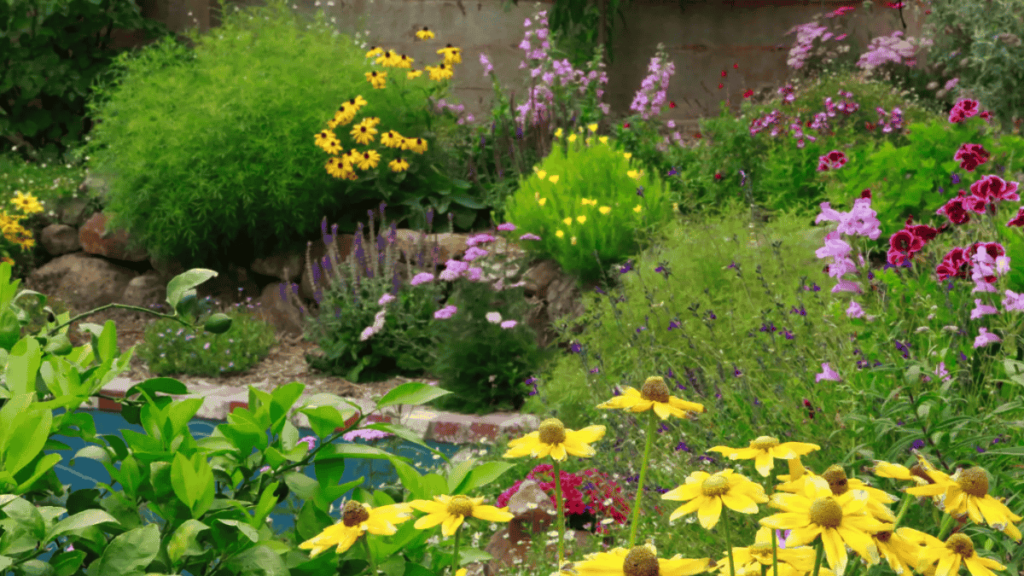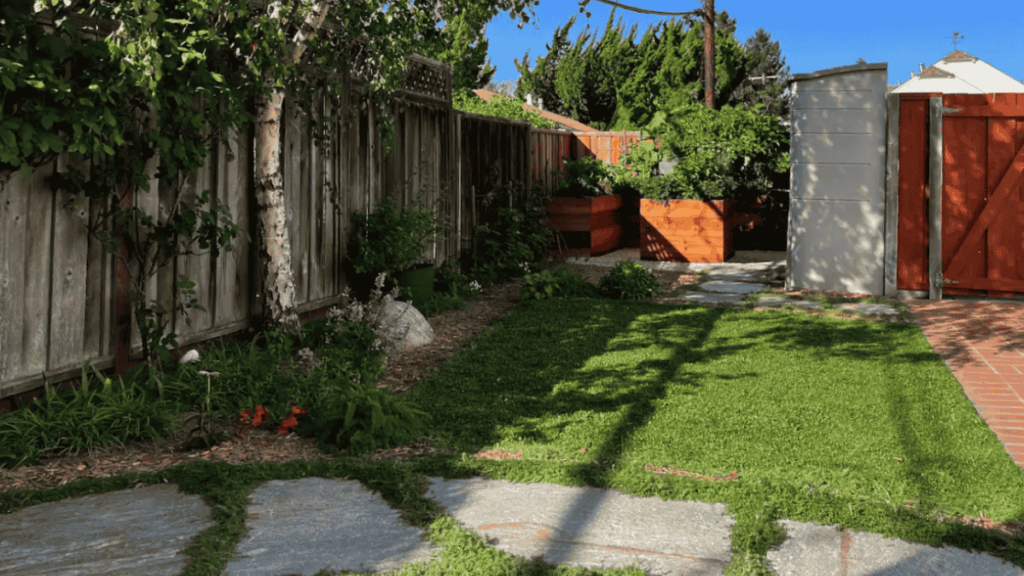How Community Gardens and Urban Farms are Transforming Urban Spaces
Community gardens and urban farms are transforming urban spaces, turning concrete jungles into green sanctuaries. These initiatives involve small-scale agriculture in urban areas, where local residents cultivate plants and vegetables.
San Mateo is witnessing a surge in such projects, reflecting a broader trend across cities globally. This movement addresses the need for sustainable living solutions within crowded urban environments.
The benefits of these green oases are manifold:
- Social: They foster community bonds and create social hubs.
- Environmental: Urban greenspaces improve air quality and boost biodiversity.
- Health: Fresh produce access enhances nutrition and physical well-being.
Urban agriculture is not just about growing food; it’s about nurturing connections—between people, their environment, and their health.
The Rise of Urban Agriculture: Transforming Underutilized Spaces
In the heart of the city, where vacant lots and forgotten corners once stood silent, a quiet revolution is underway. Urban agriculture breathes new life into underutilized spaces, reshaping not only landscapes but the spirit of urban neighborhoods. Abandoned lots, patches by railways, and unused rooftops are being transformed into lush gardens—verdant sanctuaries where possibility takes root.
Urban farming thrives in unexpected places:
- Community Gardens: Residents claim neglected land, cultivating communal plots that produce vegetables, herbs, and flowers. These gardens blossom with collaboration, purpose, and shared harvests.
- Rooftop Gardens: Concrete rooftops convert to thriving oases above the bustle. These elevated retreats absorb rainwater, insulate buildings, and provide fresh produce—right where people live and work.
- Vertical Farming: Ingenious use of walls and stacked planters enables high-yield food production in minimal footprints. Imagine strawberries trailing down a balcony or leafy greens flourishing on a sunlit fence.
- Guerrilla Gardening: Acts of quiet defiance see seeds sown in overlooked nooks—medians, alleys, even abandoned tree pits—inspiring neighbors to reimagine what’s possible.
Every reclaimed plot tells a story of resilience. Where blight once hindered connection to nature and nourishment, urban agriculture cultivates beauty, abundance, and hope. As these green interventions multiply across San Mateo and beyond, they lay the groundwork for thriving communities ready to nurture both people and planet.
Building Community Through Gardening: Social Benefits of Urban Agriculture
Community gardens serve as vibrant social hubs, fostering interaction among residents and nurturing a sense of belonging. These shared green spaces invite neighbors to connect over a common purpose, cultivating not just plants but also friendships and stronger community ties.
Neighborhood safety benefits significantly from the presence of community gardens. Active participation in these spaces leads to increased neighborhood watchfulness and a reduction in crime rates. A well-maintained garden indicates a cared-for community, deterring negative activities and fostering a safer environment for all.
Volunteer involvement transforms these urban oases into thriving educational centers. Residents gain hands-on experience in sustainable practices, making gardening accessible to all skill levels. Educational programs empower participants with knowledge about food production, environmental stewardship, and healthy living.
Local growers find opportunities to share expertise and resources, enhancing community resilience by creating networks of support. These interactions nurture a culture of collaboration and mutual aid, strengthening the fabric of the neighborhood.
In essence, community gardens are more than just agricultural projects; they are catalysts for social change, fostering engagement, empowerment, and cohesion among urban residents.
Nourishing Communities: Health and Nutrition Advantages of Local Food Production in Cities
A walk through a thriving community garden reveals more than lush greenery—it’s where local food near me becomes a daily reality for city dwellers. These vibrant spaces bridge the gap between urban living and fresh, nutritious foods, turning empty plots into sources of abundance.
1. Increased Access to Fresh and Culturally Relevant Foods
Urban farms and gardens deliver produce that reflects the culinary traditions and preferences of neighboring families. The result is access to ingredients not always found at large supermarkets, including heirloom tomatoes, Asian greens, or heritage beans that carry stories from many backgrounds. For communities like San Mateo, this means the ability to put healthy eating habits into practice—shopping for dinner just steps from home.
2. Positive Impacts on Physical and Mental Health
Engaging with the soil offers more than fresh air; it invites movement, mindfulness, and connection—a natural antidote to stress. Studies consistently highlight gardening’s role in reducing anxiety and boosting moods through regular activity and exposure to nature. Harvesting a basket of crisp greens or vibrant carrots brings satisfaction unmatched by pre-packaged meals.
3. Food Security Where It’s Needed Most
Community-led food production strengthens resilience during uncertain times, providing a reliable source for healthy meals. Every seed planted is an act of empowerment—nourishing bodies while cultivating independence from distant supply chains.
Garden beds become catalysts for wellbeing: nourishing roots that run deep in both body and spirit, fortifying neighborhoods with every harvest.
Empowering Local Growers: Economic Opportunities Through Community Gardens and Urban Farms in San Mateo
Community gardens and urban farms play a significant role in San Mateo’s local economy, empowering small-scale growers. These spaces not only produce fresh produce but also promote entrepreneurship, sustainable business practices, and environmentally friendly property investments.
Income-Generating Possibilities for Local Growers
- Plot leasing: Individuals can rent small plots within community gardens to grow specialty produce or flowers, creating side incomes or launching micro-businesses.
- Farmers’ markets & CSA programs: Urban farms in San Mateo are increasingly supplying neighborhood farmers’ markets and community-supported agriculture (CSA) boxes, putting hyper-local, nutrient-rich food directly into the hands of neighbors.
- Workshops & experiences: From seedling sales to garden-to-table cooking classes, local growers can leverage their expertise while generating revenue and building lasting connections with the community.
Fostering Eco-Conscious Business and Sustainable Investments
- Homeowners and investors seeking to align their properties with wellness values discover that integrating urban farming enhances real estate value while advancing sustainability goals.
- Boutique businesses—cafés sourcing garden-fresh ingredients, landscaping firms specializing in edible installations—thrive by supporting these green initiatives.
- Incentives for sustainable land use encourage developers and residents alike to prioritize regenerative spaces over conventional lawns or unused lots.
These flourishing economic opportunities invite residents of San Mateo to reimagine both prosperity and purpose within their neighborhoods.
Designing Harmonious Outdoor Spaces for Community Gardens And Urban Farms In San Mateo
Thoughtful design is the foundation of any successful community garden or urban farm, giving each green space a sense of purpose and intention. True eco-conscious design respects both the land and its inhabitants, combining beauty, functionality, and sustainability.
A harmonious connection between homeowners and their outdoor spaces can be achieved by incorporating the following principles into the design:
1. Accessibility
Pathways wide enough for wheelchairs and strollers promote inclusivity and ease of movement. Raised beds invite gardeners of all ages and abilities to reach into the soil.
2. Multi-functionality
Edible landscapes serve multiple purposes—consider benches shaded by fruit trees, winding herb gardens framing play areas, or trellises supporting beans and creating natural privacy screens.
3. Native Plant Selection
Opting for drought-tolerant and pollinator-friendly species not only conserves water but also attracts butterflies, bees, and birds, deepening residents’ connection to local ecology.
4. Artful Layout
Curved paths, sensory gardens with fragrant herbs, and vibrant signage reflect community identity while guiding exploration.
5. Resource Stewardship
Incorporating compost stations, water catchment systems, and solar-powered lighting demonstrates sustainable living practices at every turn.
Imagine a garden that feels like a sanctuary—where children harvest strawberries after school, neighbors swap recipes beside a patch of basil, and every design decision promotes health, happiness, and environmental responsibility. This vision becomes possible through collaboration among designers, homeowners, city planners, and passionate volunteers—each contributing to a space that embodies shared values.
Eco-Consciousness in Action: Environmental Impact and Sustainability of Urban Farms
Urban farms are a new form of eco-consciousness, integrating regenerative design into city life. These green spaces offer concrete environmental advantages that extend well beyond their limits.
Air Quality Improvement
Living plant canopies filter airborne toxins, absorb carbon dioxide, and produce oxygen. Community gardens and rooftop farms act as green lungs for dense neighborhoods, refreshing the urban atmosphere daily.
Biodiversity Boost
Layered plantings—herbs, native flowers, fruit trees—invite pollinators and beneficial insects where concrete once dominated. Birds and butterflies return, weaving resilience into the local ecosystem.
Sustainable Land Use
Transforming vacant lots or underutilized rooftops into productive spaces means every square foot serves a purpose. These gardens model circular resource use: composting food waste, capturing rainwater, nurturing soil health without synthetic inputs.
Reduced Food Miles
Locally grown produce travels blocks instead of continents. Each harvest slashes transportation emissions while delivering ultra-fresh food to nearby tables—a direct line from soil to plate.
Community Gardens and Urban Farms: Connecting with Local Growers turns climate challenges into opportunities for resilience. Residents become stewards of sustainability, their hands nurturing both community spirit and the earth beneath their feet. The result is not just a greener cityscape but a living example of what eco-conscious action looks like up close.
Case Studies Highlighting Successful Urban Farming Initiatives Around the World That Can Inspire San Mateo
OrtiAlti, Milan
OrtiAlti, a groundbreaking initiative in Milan, transforms unused urban rooftops into lush vegetable gardens. This project not only revitalizes neglected spaces but also promotes social cohesion by engaging local communities in sustainable gardening practices. The gardens provide fresh produce to residents, support biodiversity, and enhance urban aesthetics. OrtiAlti demonstrates how cities can utilize vertical spaces to create green havens amidst concrete jungles, fostering environmental stewardship and community spirit.
The High Line, NYC
The High Line in New York City is an exemplary model of urban renewal through green space development. Originally an abandoned railway track, it has been converted into a linear park featuring native plants and public art installations. This urban oasis attracts millions of visitors annually, boosting local economies while offering a serene escape from city hustle. By incorporating native species and sustainable design, The High Line showcases the potential for transforming derelict infrastructure into vibrant community assets that enhance urban life.
NKCDC Garden Center, Philadelphia
In Philadelphia, the New Kensington Community Development Corporation (NKCDC) has spearheaded efforts to convert vacant lots into thriving community gardens. These spaces serve as educational hubs where residents learn about organic farming and sustainable living. The NKCDC Garden Center fosters neighborhood resilience by providing access to healthy food options and creating a sense of ownership among participants. Through its focus on empowerment and education, NKCDC exemplifies how urban agriculture can drive social change and improve quality of life in urban areas.
These innovative projects illustrate the transformative power of urban agriculture in revitalizing communities worldwide.
Conclusion
Community gardens and urban farms have the power to transform our cities. By supporting local urban agriculture initiatives, we can create sustainable living environments and empower our communities.
Imagine strolling through lush green spaces, meeting local farmers, and savoring fresh fruits and vegetables in your own neighborhood.
Here’s how you can make a difference:
- Join or start a community garden
- Volunteer at nearby urban farms
- Support environmentally-friendly businesses
Together, we can create healthier, more connected communities by simply growing our own food. Let’s embrace this opportunity for change and work towards a better future.

Diego Torrelio
Founder & CEO





